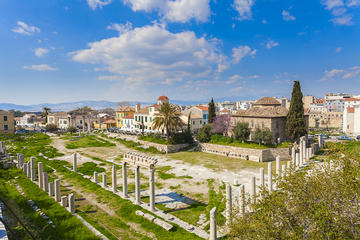Agora of Athens
TIME : 2016/2/22 11:07:42

Agora of Athens
The political and social heart of the ancient city of Athens, the famous Agora of Athens (or the Forum of Athens) is one of the city's most important archeological sites -- the remainder of the civic center and marketplace where Greek democracy was first brought to life.
Today, the ruins are regarded as the best-preserved example of an ancient Greek agora, standing to the northwest of the Acropolis between the hills of Areopagus and Kolonus Agoraios. Dating back to the 6th century BC (before which it was used as a residential area), the vast area was originally laid out by Peisistratus and featured an elaborate drainage system, a series of fountains and a temple devoted to the Olympian Gods. Later additions included the temples of Hephaestus, Zeus and Apollo, a series of altars and a concert hall, before the agora was finally abandoned after a Slavic invasion in the 6th century AD.
Today, the fragments of the once glorious marketplace provide important clues to the former political, civic and economic center of the ancient world, most notably the beautifully preserved Hephaiston temple and the shopping center of Stoa of Attalos, which now houses the Museum of the Ancient Agora.
